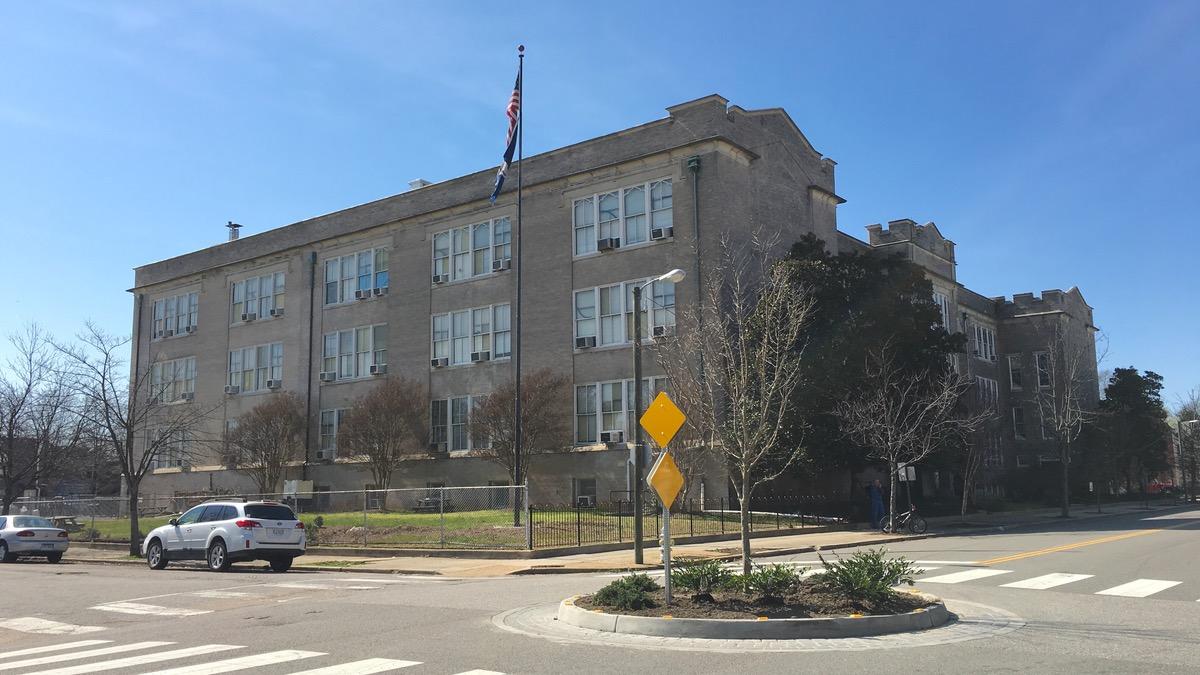Floyd Avenue motorists are facing a different kind of bumper yield
How does one even function as a motorist on Floyd Avenue anymore? The answer lies within (your heart) (and this article by Mike MacKenzie).

Floyd Avenue’s transition to a “bike/walk” street1 is complete, offering Richmond motorists new opportunities to test their mettle with a series of “circular intersections” (we’ll get to this terminology shortly). The circles replaced some (not all!) four-way stop signs on Floyd throughout the Museum District and the Fan. Sharon North, Public Information Officer with the City’s Public Works Department, says, “[the circular intersections] serve as a means to slow down traffic in residential areas,” helping drivers, pedestrians, and cyclists coexist peacefully within the mortal realm.
Traffic circles, roundabouts, rotaries, and “circular intersections” have challenged the rugged individualism of American drivers for generations, immortalized on film by the plight of the Griswolds. Reports suggest Richmond motorists have likewise struggled with elliptical traffic patterns.
The term “traffic circle” has referred to large, high speed, multiple-lane rotary intersections–hardly descriptive of the small islands in Floyd Avenue. “Roundabout” generally refers to a smaller circular island designed to slow traffic rather than circulate it. The Virginia Department of Transportation has a comparative chart available for curious readers.
Fortunately for those of us who don’t wish to commit the nuances of traffic circulation terminology to memory, a 2013 addition to the Code of Virginia makes these differences a moot point. Any intersection with a circular island at its center–including roundabouts, rotaries, and traffic circles–is defined as a “circular intersection.” Traffic approaching a circular intersection–any circular intersection–must follow one rule: yield the right of way to vehicles that are already in the circle.
Well, that and all the other rules of the road.
Whether a driver is entering an intersection from Floyd Avenue or from a side street, the driver must yield to any traffic in the circle. That traffic may be an automobile or a bicycle, and it may be traveling in any direction. It may be going straight, turning left, or making a U-turn. If it’s in the circle, it has the right of way according to Virginia law.
To explain, here’s a very simple flow chart for a motorist approaching a circular intersection:
Is there traffic in the circle?
- Yes: Yield the right of way.
- No: Proceed in a safe and non-reckless manner at or below the posted speed limit.
North says the City is in the process of updating the signs around the 40 circular intersections in Richmond–including those on Floyd Avenue–to reflect the interpretation of the Virginia Code that all circular intersections must operate in this manner. She also cautions that motorists should take pedestrians and cyclists into account while driving, particularly on residential streets such as Floyd Avenue.
- “Bike Boulevard” is no longer the City’s preferred description, as it doesn’t fully describe pedestrian improvements. ↩
-
Recommend this
on Facebook -

Report an error
-

Subscribe to our
Weekly Digest





Notice: Comments that are not conducive to an interesting and thoughtful conversation may be removed at the editor’s discretion.
I would love to get my hands on a bag of the weed they were smoking when this whole project was designed. I have just learned that these four way yield intersections (come on, they are not circles!) were not a mistake! It is utter confusion every time I get to one…which is often. Bike or car. Then add to it the folks that just disregard the whole thing and fly through it assuming they have the right of way because they are traveling east/west on Floyd (which I was still not sure of up until reading this).
Add to it the unusual placement of speed bumps closer to VCU. Some on the crosswalk, some before or after the crosswalk. Some marked with a sign, others not….at least one is at the location of a stop signs I believe….
What a mess.
I live on lower Floyd Avenue. I leave Floyd Ave for bikers and walkers, which often times includes me. In other words, when driving on Floyd, I minimize my driving time by proceeding East or West by turning onto either Grove Ave or Main Street. I do make sure to cross at a street with a stop sign or a light, thus minimizing the likelihood of impaired vision. It’s really easy — if you have to drive on Floyd Ave, do so for only a block or two.
And, while I’m on this subject, I encourage cyclists to cycle on Floyd and stay off of Grove, Main, Cary, Hanover, etc and leave them to automobiles.
I’m sure they look cool on satellite/aerial pics… Does ANYONE- driver, bicyclist, skater, jogger-mom, motorcyclist, dog-walker, or regular pedestrian- feel at ease or “safer” when trafficking these obstructions?
Until the city enforces parking distances from crosswalks, all intersections in the gridded streets are hazardous. Anything that slows drivers is a plus, including roundabouts. However, you can thank the Nimby’s on Floyd who neutered the bike boulevard into what it is today. Instead of roundabouts, it should have been physical diverts, intersection diets, speed tables, and lowered limits. Also remember this was supposed to be done in time for the bike race, but resident complaints piled on delays.